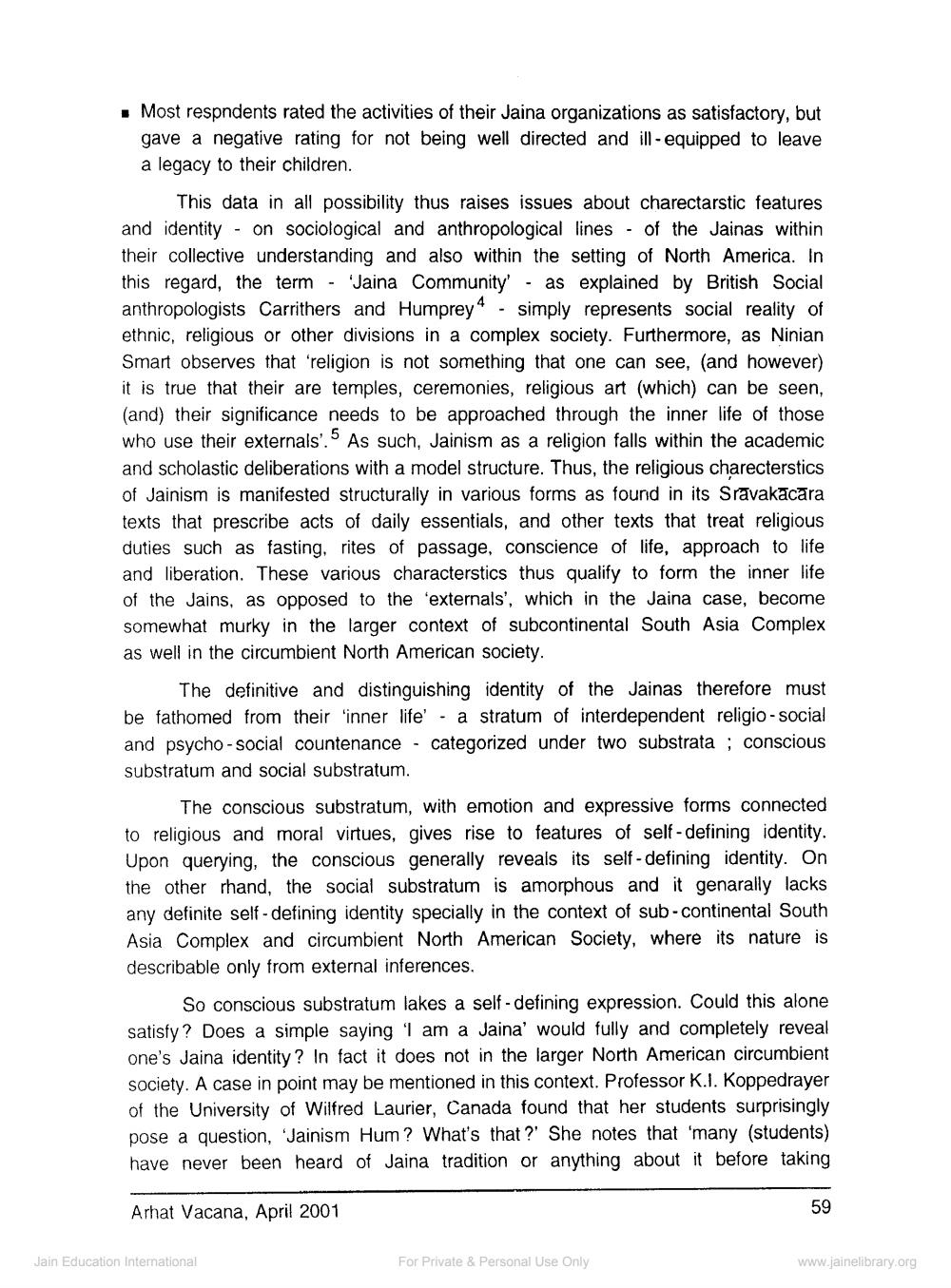________________
Most respndents rated the activities of their Jaina organizations as satisfactory, but gave a negative rating for not being well directed and ill-equipped to leave a legacy to their children.
This data in all possibility thus raises issues about charectarstic features and identity - on sociological and anthropological lines - of the Jainas within their collective understanding and also within the setting of North America. In this regard, the term - Jaina Community' - as explained by British Social anthropologists Carrithers and Humprey 4 - simply represents social reality of ethnic, religious or other divisions in a complex society. Furthermore, as Ninian Smart observes that religion is not something that one can see, (and however) it is true that their are temples, ceremonies, religious art (which) can be seen, (and) their significance needs to be approached through the inner life of those who use their externals'. As such, Jainism as a religion falls within the academic and scholastic deliberations with a model structure. Thus, the religious charecterstics of Jainism is manifested structurally in various forms as found in its Sravakācāra texts that prescribe acts of daily essentials, and other texts that treat religious duties such as fasting, rites of passage, conscience of life, approach to life and liberation. These various characterstics thus qualify to form the inner life of the Jains, as opposed to the externals', which in the Jaina case, become somewhat murky in the larger context of subcontinental South Asia Complex as well in the circumbient North American society.
The definitive and distinguishing identity of the Jainas therefore must be fathomed from their 'inner life' . a stratum of interdependent religio-social and psycho-social countenance - categorized under two substrata ; conscious substratum and social substratum.
The conscious substratum, with emotion and expressive forms connected to religious and moral virtues, gives rise to features of self-defining identity. Upon querying, the conscious generally reveals its self-defining identity. On the other rhand, the social substratum is amorphous and it genarally lacks any definite self-defining identity specially in the context of sub-continental South Asia Complex and circumbient North American Society, where its nature is describable only from external inferences.
So conscious substratum lakes a self-defining expression. Could this alone satisfy? Does a simple saying 'I am a Jaina' would fully and completely reveal one's Jaina identity? In fact it does not in the larger North American circumbient society. A case in point may be mentioned in this context. Professor K.I. Koppedrayer of the University of Wilfred Laurier, Canada found that her students surprisingly pose a question, Jainism Hum? What's that?' She notes that 'many (students) have never been heard of Jaina tradition or anything about it before taking
Arhat Vacana, April 2001
59
Jain Education International
For Private & Personal Use Only
www.jainelibrary.org




